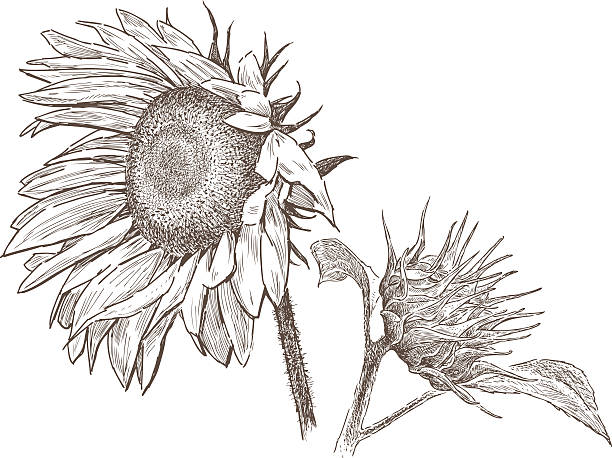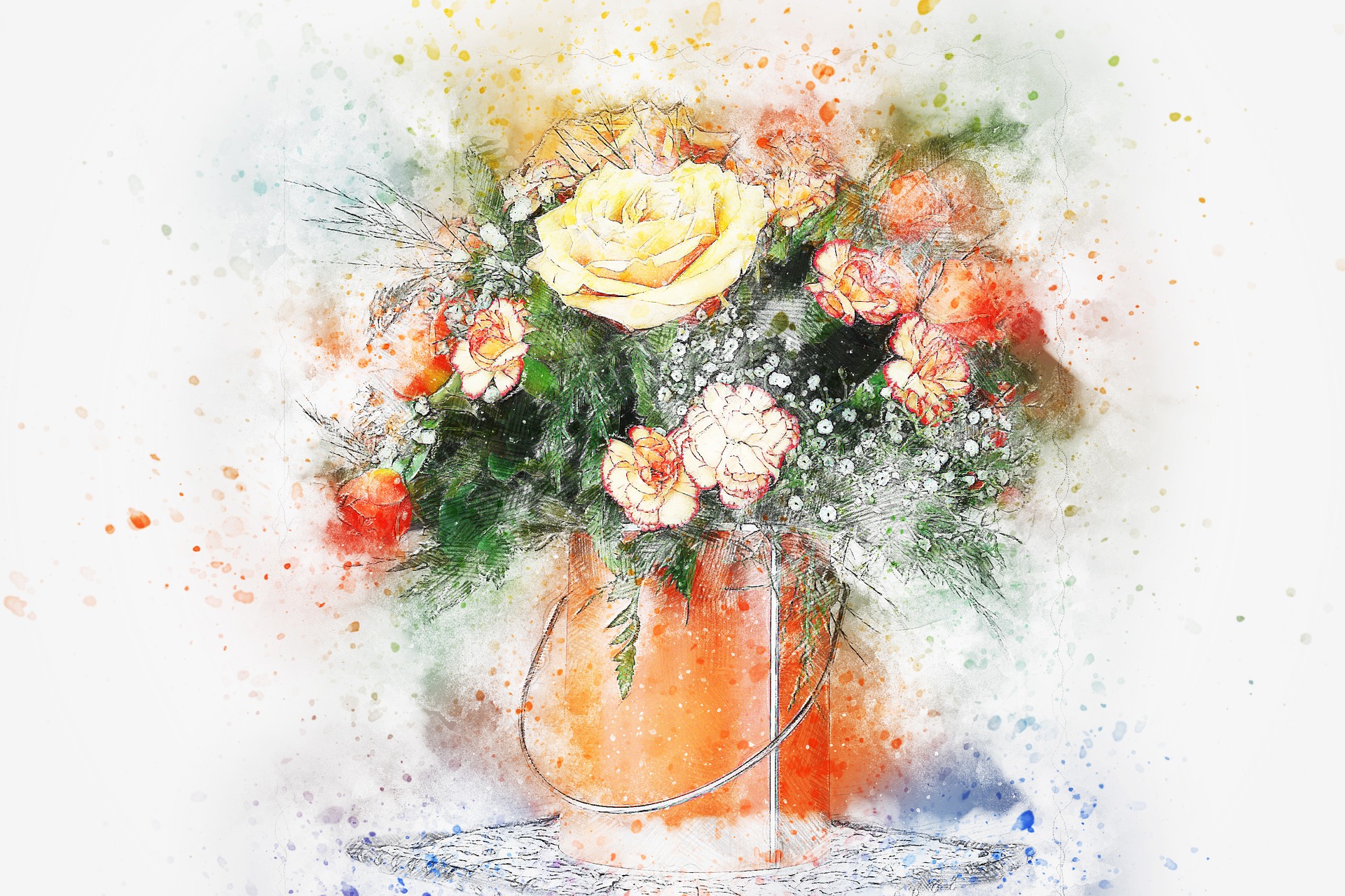
Intro
Unlocking the secrets to easy flower drawing can transform your sketches from simple to simply stunning.
Whether you’re a seasoned artist or a complete beginner, the allure of capturing the delicate beauty of flowers is universally appealing.
This guide focuses on flowers to draw that won’t leave you tangled in complexity.
Ready your pencils, and let’s dive into a garden of drawing possibilities.

The Basics of Flower Drawing Easy Techniques
To master flower drawing easy techniques, start with the basics. Begin by sketching simple shapes like circles and ovals for the center and petals of the flower.
This approach helps create a foundation for your flower drawings. Keep your sketching light, which allows for easy adjustments as you refine your drawing. Focus on capturing the flower’s general outline first.
Adding details comes later, after you’ve established the basic structure.
A gentle touch with the pencil is essential; it facilitates blending and shading, making the process smoother.
This method lays the groundwork for more complex drawings, gradually building your confidence and skill.
Practice these foundational techniques, and soon, capturing the beauty of flowers on paper will become second nature.


Daisies – The Perfect Starter Flower
Daisies stand out as ideal flowers to draw for beginners. Their symmetrical form, featuring a circular center and evenly spaced petals, simplifies the drawing process.
Start by sketching this basic shape, aiming for balance rather than perfection. Varying the petals’ length and curve adds interest and mimics nature’s diversity.
These variations introduce character to your artwork, making each daisy unique. As you practice drawing daisies, you’ll gain confidence in your ability to tackle more complex subjects.
Keep your pencil strokes light to allow for easy adjustments. Daisies not only offer a solid foundation in flower drawing easy techniques but also inspire creativity through their simple, yet beautiful structure.


Capturing the Elegance of Roses
Roses may look complex, but simplifying them into basic shapes makes flower drawing easy.
Begin with a spiral for the core and layer petals around it, each one slightly larger. Keep your lines soft until the form satisfies you.
This method encourages exploring shading techniques, which add depth to your drawing. Practice varying the size and curvature of the petals for a more natural look. Through this approach, roses become a fantastic subject for honing your shading skills.
Remember, light strokes allow for effortless corrections.
As your confidence grows, so will the realism and depth of your roses, making them a standout in your collection of flower drawings.


The Simplicity of Tulips
Tulips are wonderful flowers to draw for any skill level. Their iconic cup-like appearance and streamlined petals offer a straightforward subject for sketching.
Start with a few lines to outline the petal shape and stem. To add life, try bending the stem slightly or opening some petals. This simple variation introduces motion and realism to your tulip drawings.
Play with angles to capture tulips from different perspectives, enhancing the dynamic nature of your sketches. Light strokes work best, allowing easy adjustments as your tulip takes form.
Tulips serve as a versatile subject in the realm of flower drawing easy, ideal for practicing line work and composition.


Lavender – Sketching A Scent
Lavender sketches challenge you to capture intricate details with a fine touch. Start with the slender stem, drawing it with a series of light, smooth strokes.
Next, add tiny bud clusters along the stem. Densely cluster these at the top and let them thin out as you move down.
These small buds require delicate, short strokes for an authentic look. Focus on the fine details, but keep your hand relaxed.
Lavender, with its elegant simplicity, encourages precision in flower drawing easy exercises. This flower is perfect for artists looking to refine their skills in capturing minute details.
Approach it with patience and a gentle hand to successfully bring its delicate essence to your art.


Sunflowers – Bright and Bold
Sunflowers capture attention with their size and vibrant energy. Start your sunflower drawing with a large circle for its center. Then, add oval-shaped petals that radiate outward, symbolizing the sun’s rays.
For the stem, sketch a strong, straight line to support the flower’s head, showcasing the contrast between its robust form and the delicate petals. Incorporating the large, distinct leaves adds to the overall boldness of your drawing.
Sunflowers offer a unique opportunity to practice texture, especially in the center’s intricate details.
Approach this flower with a focus on strong, confident strokes to convey its lively essence.
Use this guide to bring the bright and bold beauty of sunflowers into your flower drawing easy exercises.

Incorporating Color into Your Flower Drawings
Introducing color to your sketches adds vibrancy and depth. Begin with light layers using pencils, markers, or watercolors. Observe how natural light affects colors on petals and leaves, enhancing their realism. Gradually build up intensity for dynamic effects.
Experiment with shading to give your flowers a three-dimensional appearance. Mixing colors can yield surprising and delightful results. Remember, the goal is to complement your sketches with hues that breathe life into them.
Keep practicing and don’t be afraid to try bold color combinations.
Each flower offers a unique opportunity to explore a wide spectrum of colors.

Arranging Flowers in a Bouquet Drawing
Creating a bouquet drawing goes beyond merely grouping various flowers together. Focus on composition and balance for a visually pleasing arrangement.
Begin with sketching the overall shape of your bouquet.
Next, strategically place individual flowers within this outline. Utilize the rule of thirds to enhance visual interest and harmony among the elements.
Vary the flowers in size and type for a dynamic and realistic bouquet.
Pay attention to how the flowers interact with each other, ensuring they complement rather than compete.
Add leaves and filler elements to fill gaps and add texture. Remember, the arrangement should flow naturally, mimicking how a real bouquet would look.
Practice arranging different flowers together to master this captivating aspect of flower drawing easy.

Finding Inspiration for Your Flower Drawings
For flower drawing easy inspiration, look to the world around you. Nature serves as the ultimate muse, offering endless varieties and colors of flowers. Visit a botanical garden to see a wide range of species up close.
Even a walk in your neighborhood can reveal beautiful blooms to sketch. Don’t overlook man-made sources either. Floral patterned fabrics and wallpaper can spark unique ideas.
Also, consider how the scent of flowers might inspire the mood of your artwork. Always keep a sketchbook nearby to jot down or sketch ideas as they come to you. Inspiration strikes at unexpected moments, so be ready to capture it whenever, wherever.
This approach keeps your creativity flowing, enriching your flower drawing easy projects with fresh perspectives and unique touches.

Practice Makes Perfect
To excel in flower drawing easy, dedicate daily time to sketch. Experiment with various flowers, angles, and drawing techniques. This routine sharpens your attention to detail and helps you carve out a unique style.
Each session enhances your skill, pushing you closer to becoming adept at capturing the essence of flowers on paper.
Embrace challenges and learn from each attempt. Remember, consistent practice is your pathway to mastering the art of flowers to draw.
Keep a sketchbook handy for spontaneous practice.
Your progress will surprise you, turning simple sketches into intricate floral designs. Start now and watch your flower drawings flourish.

TLDR
Begin with the basics of flower drawing by learning simple shapes and practicing gentle strokes.
Daisies, roses, tulips, lavender, and sunflowers are great flowers to draw for both beginners and more experienced artists, each offering unique lessons in form, shading, and detail.
Adding color can bring sketches to life, and arranging multiple flowers into a bouquet teaches composition and balance. Look to nature for endless inspiration and practice regularly to improve your skills.
Whether you’re sketching a single bloom or an entire bouquet, remember that patience and practice are key to creating beautiful flower drawings.
